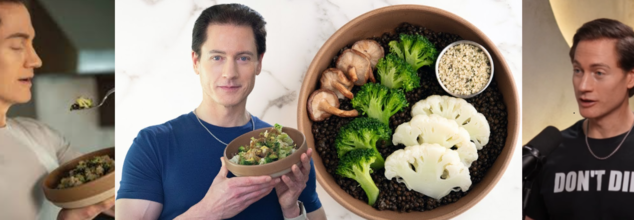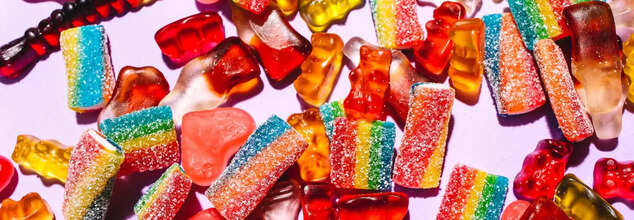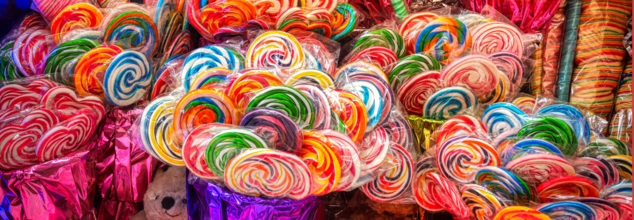- Health Conditions A-Z
- Health & Wellness
- Nutrition
- Fitness
- Health News
- Ayurveda
- Videos
- Medicine A-Z
- Parenting
- Web Stories

Credit: Canva
Is Climate Change Affecting The Rice In Your Kitchen?
As climate change intensifies, researchers have predicted that arsenic in rice could increase and trigger a major public health crisis. Rice is a staple in many countries. In Asia, particularly in Japan and Korea, it is an important component in all meals. A rise in the arsenic, therefore, could seriously exacerbate deadly diseases, including cancer.
What is Arsenic?
Arsenic is a naturally occurring metallic element, widely distributed in the Earth's crust and found in various forms, like inorganic and organic. Research shows that it is toxic and does lead to severe health issues like cancers of the bladder, lung and skin, as well as several cardiovascular and neurological diseases.
Why is arsenic content in rice increasing?
Researchers from Colombia University, stated that an increase in temperatures above 2 degrees Celsius combined with rise in carbondioxide in the atmosphere can alter the soil chemistry, favouring arsenic, which gets more easily absorbed in rice grain. Contaminated soil and irrigated water while growing rice are known to increase inorganic arsenic in rice.
What Did Researchers Say?
The study was conducted by researchers from Columbia University and published in The Lancet Planetary Health. The study explained that an increase in temperatures above 2 degrees Celsius and rising levels of carbon dioxide could be causing changes in soil chemistry, favouring arsenic, which gets more easily absorbed into a rice grain. Contaminated soil and irrigated water from that area, while growing rice are known to increase inorganic arsenic in rice.
"Our results suggest that this increase in arsenic levels could significantly elevate the incidence of heart disease, diabetes, and other non-cancer health effects," said author Lewis Ziska, associate professor of environmental health sciences, Columbia University, said. "We found that temperature and CO2 act synergistically to increase arsenic concentrations in rice, compounding dietary arsenic exposures for rice consumers and leading to projected cancer cases in the tens of millions among populations of Asian countries in 2050," according to the study.
Are there any mitigation strategies?
There are ways to mitigate arsenic exposure. This includes breeding plants to minimise arsenic uptake and improved soil management in rice paddies, along with health initiatives. THE US FDA also recommends replacing cereals from rice with those with whole grains. Published studies, including research by the FDA, show that cooking rice similar to how pasta is cooked can reduce 40 to 60 per cent of the inorganic arsenic content, depending on the type of rice. However, this method of cooking rice in excess water—using 6 to 10 parts water to 1 part rice and then draining the excess water—also results in lowering the nutritional value of enriched polished and parboiled rice

Credits: YouTube and Instagram
The Longevity Diet: Bryan Johnson Eats 3 Meals In 6 Hours—With Extra Virgin Olive Oil
Bryan Johnson, the 47-year-old tech entrepreneur who is known for his anti-ageing techniques and for his quest to reverse his biological age has finally ditched the medicine that has kept him young. He had recently been featured in Netflix documentary Don't Die: The Man Who Wants To Live Forever, where he has shown his various attempts on achieving more time on the planet, his quest for longevity.
To live 'forever' he had been consuming 13 milligrams of immunosuppressant rapamycin for the last five years. However, he has now given it up after he found out that the side effects outweighed the advantages.
As per the opinion article published in Impact Journals, titled Rapamycin for longevity, it can extend maximum life span nearly three-fold. It can also prolong life in normal mice as well as in yeast, worms, and flies, and prevents age-related conditions in rodents, dogs, nonhuman primates and humans. It has been FDA-approved for humans and has been used safely for decades. In 2006, it was suggested that rapamycin could be used immediately to slow down aging and all age-related diseases in humans. However, another study published in Oncotarget, titled About-face on the metabolic side effects of rapamycin, it can lead to metabolic defects, including hyperglycemia, hyperlipidemia, insulin resistance and increased incidence of new-onset type 2 diabetes.
Now without the medicines, what all does Johnson do to keep his quest for longevity going? He focuses on what he eats!
The Diet For Longevity
On a podcast with Jay Shetty on his show On Purpose, he revealed that he ensures his daily diet is roughly of 2,500 calories per day and his meals are all between 6 am and 11.30am. The NHS also recommends that an average man needs 2,500kcal a day.
His day starts with 54 supplements and an hour in the gym. He also revealed that he has never had cheat meals in his life ever. "Now the idea of eating a piece of pizza or a whole pizza or like a doughnut or something just makes me sick. Because if I'm going to do it, there'll be like five seconds of maybe enjoyment and then you've got like an entire day of misery."
What does he eat? He consumes "A lot of broccoli, cauliflower, lentils, hemp, pea protein, hemp protein, berries, nuts, seeds."
What Are The Three Meals In 6-Hours He Eats?
The Supper Veggie
This consists of broccoli, cauliflower, black lentils, ginger, and garlic.
The Nutty Pudding
This is made with macadamia nuts, walnuts, flax seeds, pomegranate juice, and berries, combined with pea and hemp protein.
A Mix Of All
The third meal can vary, but it usually includes a mix of all, vegetables, berries, nuts, and seeds.
ALSO READ: Bryan Johnson Launches New Religion 'Don't Die'- Here's How To Become A Member
The Extra Virgil Olive Oil On The Side
He also revealed that additionally, he also consumes a tablespoon of extra virgin olive oil with each meal and 6g of pure cocoa. "We’ve tried to construct a perfect diet, so every single calorie I consume has a specific objective," he says. This is a "stack superfoods across the board".
He is currently consuming 80 grams of protein, after he struggled at 120 grams of protein. His gut health could not take it.
Johnson also compared extra virgin olive oil to Ozempic, due to its potential health benefits and benefits in weight management and glucose control.
In one of the episodes of All The Diary Of A CEO podcast, he said, “What things can I do in my life that are easy and actionable, and have a high impact? Extra virgin olive oil is very close to number 1. It is better than Ozempic. It is.”
Johnson says that both Ozempic and extra virgin olive oil can stimulate the release of GLP-1, which is a hormone that regulates appetite and blood sugar levels. The extra virgin olive oil is a high-quality oil that is extracted from the first pressing of olive and is thus considered the purest and healthiest oils due to its rich nutritional profile.
“There is a study, where people lost 5.2 pounds consuming EVOO for nine weeks (in addition to what they are currently eating). I think the quantity for the study was 45 ml daily or something like that; it is between 30-60 ml daily. But there's things, for example, like it reduces by over 60 percent invasive breast cancer, it reduces your blood sugar levels by 60 percent post a meal and your oxidised LDL levels. The bad thing is that your body is causing damage by 80 percent post a meal. So, I have a tablespoon (of olive oil) with every single meal and it is like the super of superfoods," he said.

Credits: Canva
What Is RFK's Food Dye Plan?
Robert F Kennedy Jr has been a longtime critic of synthetic additives. He has, from time and again emphasized that Americans are consuming artificial chemicals without their knowledge or consent. "Four years from now, we are going to have most of these products off the market - or clearly labeled so you know what you are buying," he stated during a press briefing.
Now, a major announcement was made on Tuesday by the Trump administration on its plan to phase out petroleum-based artificial food dyes from the US food supply. The Trump administration and the Department of Health and Human Services (HHS), headed by Robert F Kennedy Jr., described this as a "significant milestone". The initiative is part of the broader health campaign which is branded "Make America Healthy Again".
The move is set to initiate a nationwide transition toward natural color alternatives in food production.
The National Standard
The HHS, in collaboration with the US Food and Drug Administration (FDA) said that they will establish a national standard to help the food industry move away from synthetic petrochemical dyes. This also is said to include a timeline, which will be set to replace these dyes with safer, plant-based or naturally derived alternatives.
The Dyes That Could Be Affected
The first major regulatory action under this plan involves revoking authorization of two dyes, namely Citrus Red No.2 and Orange B. The officials have also selected six more synthetic dyes to be eliminated by the end of 2026. These include FD&C Red No. 40, Yellow No. 5, Yellow No. 6, Blue No. 1, Blue No. 2, and Green No. 3.
The FDA is also planning to approve four new natural color additives shortly after a review of the additional alternatives.
FDA Commissioner Martin Makary said that for decades, American children have been "living in a toxic soup of synthetic chemicals." The administration's latest steps, he noted, are a strong move towards the elimination of petroleum-based food dyes.
Are Food Dyes Safe For Us?
As of now, the FDA defines food dyes or color additives as any substance that imparts color to food, drugs, cosmetics, or the human body. These dyes are commonly used to enhance visual appeal and to help consumers identify flavors.
While FDA guidelines state that color additives are generally safe when used correctly, there is growing concern. Some studies have linked artificial dyes to behavioral issues in children, including hyperactivity. Kennedy remarked that there are “shockingly few studies” on many of the ingredients in widespread use, calling for more thorough research.
To that end, the administration announced a partnership with the National Institutes of Health (NIH) to investigate the impact of food dyes and additives on children's development and health.
What Has Been The Response?
The plan, as of now, does not impose immediate legal restrictions. The government, however, is working closely with food manufacturers to implement the changes. Kennedy reported a positive response from industry leaders and said there is a general "understanding" of the need for reform, even if no formal agreements are in place.
Consumer and advocacy groups have praised the announcement. The Environmental Working Group (EWG) called the move “long overdue,” citing decades of evidence linking synthetic dyes to health issues. States like California and West Virginia have already passed laws restricting the use of artificial dyes in school meals and packaged foods.
However, not everyone is on board. The Consumer Brands Association, representing food and beverage companies, warned against removing what they consider safe, FDA-approved ingredients. While expressing appreciation for federal leadership, the group insisted that science and product safety must not be compromised.

Credits: Canva
Trump Administration Targets To Ban Artificial Food Dyes From Supply; How Dyes Harm Your Health?
The Trump administration is set to impose a ban on the synthetic dye industry by working to eliminate artificial food coloring from the American food supply but this isn't about politics—this is about your plate, your family's health, and a system that has let petroleum-based chemicals dictate what our food looks like for decades. Though these artificial colors enhance the appearance of foods, there is increasing concern about what they might be doing to our bodies. From lunchboxes to dessert shelves, artificial food dyes are ubiquitous—and now, they're at the center of a heated national debate.
The plan, as laid out in a media advisory by the U.S. Department of Health and Human Services (HHS), will be officially rolled out by HHS Secretary Robert F. Kennedy Jr. and U.S. Food and Drug Administration (FDA) Commissioner Marty Makary. This marks a major federal move in an emerging national dialogue regarding food safety and public health.
Artificial food coloring has been the target of suspicion for decades. In January, during the Biden administration, the FDA acted decisively by prohibiting Red Dye No. 3 in food, drinks, and ingestible medications based on animal studies that found the additive caused cancer. But that was just one of numerous synthetic coloring agents still widely used in the U.S. food supply—often in brightly colored processed foods, cereals, candies, and even medication.
Now, the Trump administration seems to be focusing on a wider category of petroleum-based synthetic dyes, such as Red No. 40, Yellow No. 5, and Blue No. 1. They are intended to add visual attractiveness but have become more and more linked to health hazards, especially among children. With a bipartisan group of legislators demanding reform, including a recent historic food dye ban signed into law in West Virginia, the push for stronger regulation is picking up speed.
What are Artificial Food Dyes?
Artificial food dyes are man-made chemicals created to duplicate the natural color. Made mostly from petroleum, they are more inexpensive to manufacture and less likely to spoil in grocery stores than natural dyes. Yet, their chemical composition is a cause for concern. Chemicals such as benzidine and 4-aminobiphenyl—both of which are found in common dyes—are known carcinogens under World Health Organization classification.
According to the Center for Science in the Public Interest (CSPI), Americans are consuming five times more synthetic food dye today than in 1955. Their pervasiveness in low-nutrient, ultra-processed foods means that even consumers trying to make healthier choices may be unknowingly ingesting these chemicals.
Research shows that Red No. 3, Red No. 40, Blue No. 2, and Green No. 3 have all been linked to cancer in animal studies. Other dyes, such as Yellow No. 5 and Yellow No. 6, have been reported to induce hypersensitivity reactions and behavioral disturbances in children. U.S. and UK studies have established a high correlation between food dye intake and hyperactivity, irritability, and impaired memory performance in children—even those without a diagnosis of ADHD.
The effort to restrict food dyes is not limited to a single political party. Indeed, Republican and Democratic legislators in over 25 states are proposing or co-sponsoring bills that restrict the use of artificial food coloring. This movement has established a patchwork of state-by-state regulations that industry executives now claim need federal harmonization.
Organizations such as the National Confectioners Association and the Consumer Brands Association have recognized increasing consumer anxiety, but assert that the FDA is best suited to spearhead national food safety efforts. Yet, public confidence in these agencies has been undermined over time, especially as food dye prohibitions in nations throughout Europe are juxtaposed with more sluggish action in the U.S.
In the EU, for instance, foods with artificial dyes are required to have a warning label. Most large U.S. food companies have already reformulated products sold in European markets with natural colorants—but still sell the artificial versions in the United States.
What Are Dyes Made Of?
Food dyes are categorized into two main types—natural and artificial. Although both are used to add color to foods and beverages, their sources and health effects are quite different.
Natural Dyes
These are sourced from natural food origins and plant-derived products. They are deemed safer and commonly exist in organic or low-processing foods.
Examples of natural colorings include:
- Turmeric – Imparts a yellow color; applied to mustards, curries, and snack foods.
- Beet juice or beet powder – Provides a red or pink color.
- Annatto – Vegetable dye derived from achiote seed, a traditional source for orange coloration of cheese and butter.
- Paprika extract (Capsanthin) – Produces intense red or orange shade.
- Carotenes – Derived from carrot, sweet potatoes, or similar root vegetables; imparts an orange hue.
Artificial Dyes
Synthetic or artificial food coloring is produced from petroleum-derived chemical substances. They are commonly used in processed foods because they have a strong color, are inexpensive, and are shelf-stable.
Some common artificial dyes are:
- Red No. 3 (Erythrosine) – Used in candies, popsicles, toaster pastries, and gummy vitamins.
- Red No. 40 – Used in cereals, snack foods, and drinks.
- Yellow No. 5 and No. 6 – Used in chips, cheeses, and candies.
- Blue No. 1 and No. 2 – Common in baked goods and sports drinks.
- Green No. 3 – Used in mint-flavored or pistachio-flavored products.
These artificial dyes are not only used for their appearance, but to cover up processing inconsistencies or to enhance foods to appear more appealing—particularly in foods with little nutritional value such as sodas, candies, and snack foods.
Health Risks of Food Dyes
While hyperactivity and behavioral problems in children tend to grab most of the headlines, artificial dyes may have broader implications. A number of dyes have been associated with immune suppression, gut irritation, and cellular toxicity. Low doses—in as little as one milligram—have been shown to cause symptoms of restlessness and insomnia in hypersensitive people.
The issue isn't just with colored candies, either. Artificially colored dyes are present in cough medicines, gummy multivitamins, sports beverages, toaster tarts, and even processed deli meats—foods where coloring may not even be readily visible to consumers.
Erythrosine, the chemical used in Red No. 3, is most controversial. Frequently found in foods such as red popsicles, toaster pastries, and some fruit drinks, it is a proven carcinogen in laboratory rats. Critics believe that ongoing use of such additives in children's foods is immoral and preventable.
Potential Cancer Risks
Red Dye No. 3 was also implicated in causing thyroid tumors in animal tests, and it is banned in the U.S. in cosmetics—though not yet in foods until recent action by the FDA.
Red 40, Yellow 5, and Yellow 6 contain minute amounts of benzidine and 4-aminobiphenyl, both identified human carcinogens.
Behavioral and Neurological Concerns in Children
Several studies have identified connections between artificial dyes and children's behavioral problems:
A U.S. study in Science reported that children performed less well on memory tests after eating a combination of food dyes.
A 2007 study in The Lancet showed that children became hyperactive within an hour of eating synthetic dye combinations—even if they didn't have ADHD.
Hyperactivity and restlessness – Particularly in children who are sensitive to dyes such as Yellow No. 5.
Sleep disturbances and irritability – Even minimal doses (as little as 1 mg) can cause reactions in sensitive people.
Allergic reactions – Certain dyes have been linked with allergy-like reactions such as skin rashes and asthma worsening.
Gastrointestinal disturbances – Anecdotal evidence has connected synthetic dyes with bloating, nausea, and stomach pain in sensitive people.
Long-Term Exposure and Cumulative Impact
Americans today consume five times more synthetic food dyes than they did in the 1950s. This cumulative exposure, particularly in children, has raised questions about long-term health effects that are still not well-studied.
Although no one responds uniformly to artificial food coloring, and in moderation is still the rule, the mounting scientific evidence—and consumer worry—have led government agencies and researchers to reassess the safety of these additives.
Natural Substitutes for Food Color Dyes
Fortunately, safer and natural substitutes do exist. Dyes created using beet juice, turmeric, annatto extracts, and paprika are now readily available and applied to organic and whole-food products. USDA-certified organic is a sound signifier that the product contains no artificial dyes.
However, transparency in the food industry continues to be a problem. Such labeling as "color added" or "artificial color added" usually hides the use of synthetic dyes. Consumers with an education level need to closely read ingredient panels and become familiar with dye numbers and names to make intelligent decisions.
The Trump administration's push to ban artificial food colorings is a turning point in the changing dialogue regarding food safety. As more information comes out and public awareness increases, pressure will build on regulators and manufacturers to respond.
While some scientists advise caution that further research is required to create definitive cause-and-effect relationships in humans, the evidence is piling up—and becoming increasingly difficult to ignore.
© 2024 Bennett, Coleman & Company Limited

